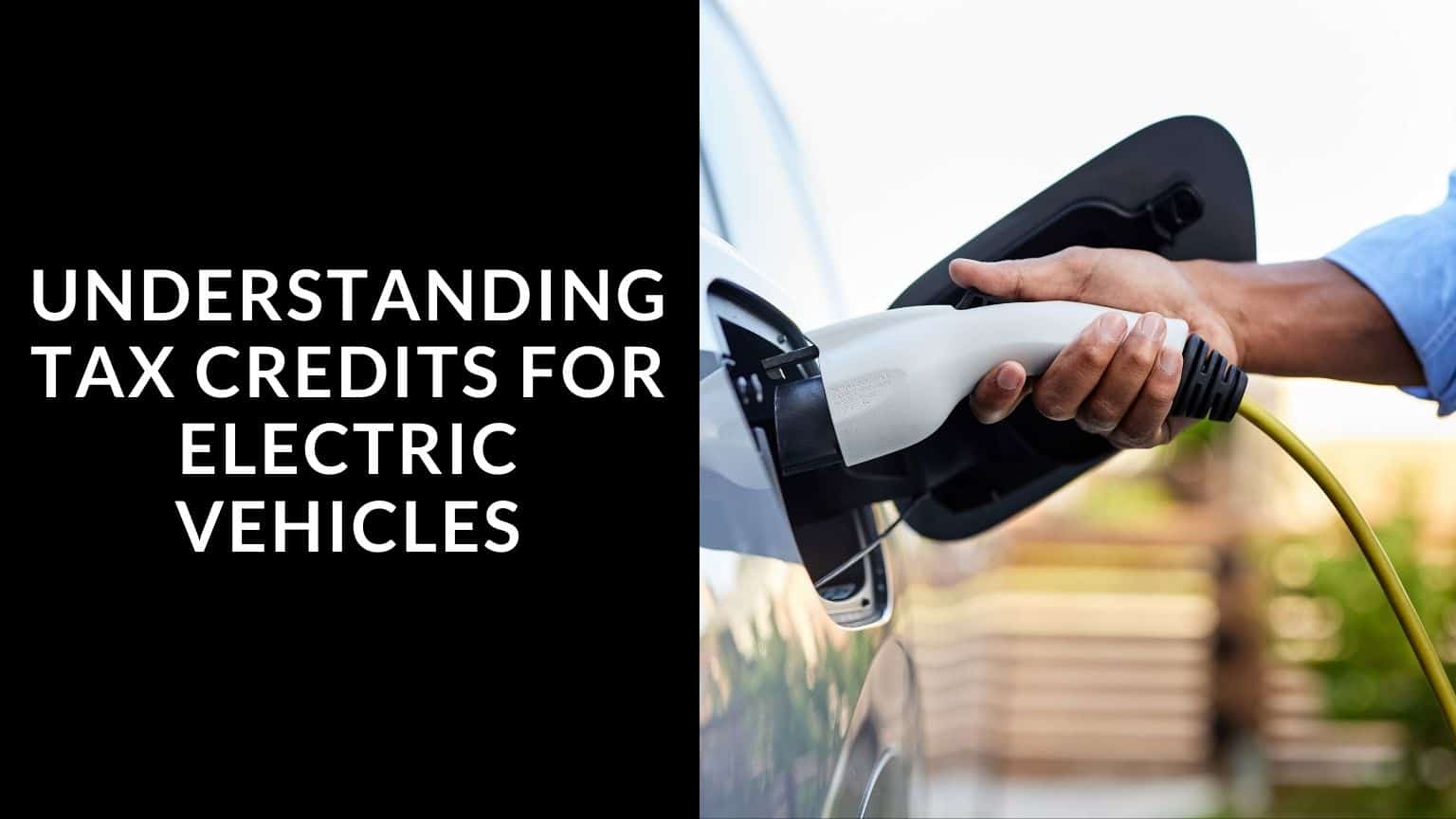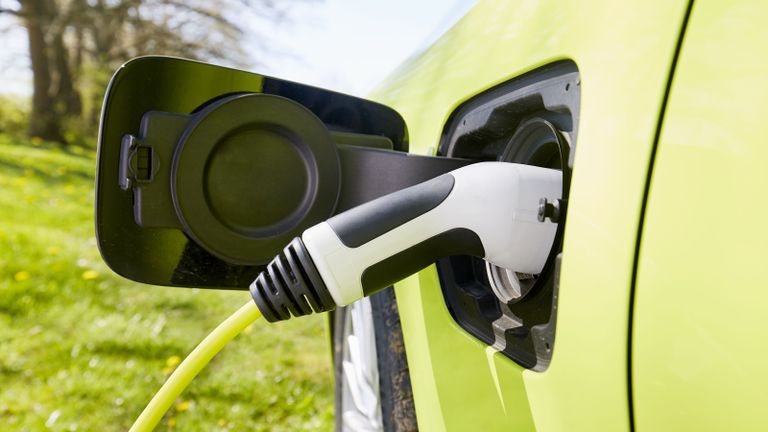Prius Prime Tax Credit Explained: Who Qualifies and How Much You Can Save

The Prius Prime tax credit is an essential incentive for individuals considering the purchase of a hybrid vehicle, particularly in 2025. This comprehensive guide aims to educate potential buyers on how this tax credit works, who qualifies, and what savings can be expected when opting for a Prius Prime. With increasing environmental awareness and the push for greener alternatives, understanding these tax credits can make a significant difference in your financial planning.
Introduction
As electric vehicles (EVs) continue to gain momentum in popularity, various incentives have been introduced to encourage their adoption. One of the most beneficial programs available is the Prius Prime tax credit. For those unfamiliar, the Prius Prime is a plug-in hybrid model from Toyota that combines the efficiency of a traditional hybrid with the ability to charge from external sources. Understanding the tax implications when purchasing a Prius Prime can lead to considerable savings and contribute to a more sustainable lifestyle.

Why the Prius Prime Is a Smart Choice in 2025
In 2025, the automotive landscape will be more competitive than ever, with numerous manufacturers releasing new models focusing on fuel efficiency and eco-friendliness. However, the Prius Prime stands out due to several distinctive features.
Environmental Impact
Opting for a Prius Prime not only benefits your wallet but also contributes positively to the environment. As a plug-in hybrid, it emits significantly lower CO2 emissions compared to gas-powered vehicles. The ability to travel short distances on electric power alone reduces fossil fuel consumption, which is an important consideration for environmentally-conscious drivers.
Advanced Technology
The Prius Prime is equipped with cutting-edge technology, including smart connectivity features and advanced driver-assistance systems. Its user-friendly interface allows for easy navigation and control over various functionalities. Additionally, with features like regenerative braking and energy monitoring, drivers can maximize efficiency and understand better how to utilize their vehicle’s capabilities.
Financial Incentives
The Prius Prime tax credit offers substantial savings for those who choose this vehicle. With federal incentives potentially reaching several thousand dollars, this makes the Prius Prime an enticing option for budget-conscious consumers.
What Is the Prius Prime Tax Credit and Why It Matters
The Prius Prime tax credit is a federal incentive designed to promote the adoption of plug-in hybrid vehicles. By providing tax credits to eligible buyers, the government aims to reduce greenhouse gas emissions and encourage more sustainable transportation options.
Importance of Tax Incentives
Tax credits serve as powerful motivators for consumers. They help offset the initial costs of purchasing a hybrid or electric vehicle, making them more accessible. The Prius Prime tax credit not only lessens the financial burden but also encourages consumers to make environmentally friendly choices.
Economic Considerations
With rising gas prices and increased awareness of climate change, investing in a fuel-efficient vehicle like the Prius Prime is both economically and environmentally prudent. The Prius Prime tax credit offers tangible monetary savings that can significantly reduce the overall cost of ownership.
Understanding the Prius Prime Tax Credit

To fully appreciate the benefits of the Prius Prime tax credit, it’s essential to understand its framework and how it applies specifically to the Prius Prime.
How the Federal EV Tax Credit Works
The federal government provides tax credits to incentivize the purchase of electric vehicles and plug-in hybrids. These credits are typically structured based on the battery capacity of the vehicle, with higher-capacity batteries yielding larger credits.
Battery Capacity
For the Prius Prime, which comes with a sizable battery, eligible buyers can benefit from a generous tax credit amount. In general, the more powerful the battery, the higher the potential credit. It’s crucial for prospective buyers to verify the current battery specifications and corresponding credit amounts before finalizing their purchase.
Phase-Out Thresholds
Another critical factor to consider is when the tax credit begins to phase out. The federal government has established thresholds based on the number of vehicles sold by each manufacturer. Once a manufacturer sells a set number of qualified vehicles, the tax credit gradually decreases and may eventually become unavailable. Keeping track of Toyota’s sales numbers can help buyers anticipate changes to the credit.
How the Prius Prime Qualifies as a Plug-in Hybrid Vehicle
Understanding how the Prius Prime fits into the classification of plug-in hybrids is vital for determining eligibility for the tax credit.
Definition of Plug-in Hybrid Vehicles
Plug-in hybrid vehicles, such as the Prius Prime, combine an internal combustion engine with an electric motor powered by a rechargeable battery. This dual mechanism allows for greater flexibility regarding fuel consumption and driving range.
Electric-Only Range
The Prius Prime features an electric-only range, enabling drivers to cover shorter distances without using gasoline. This capability enhances its appeal and solidifies its qualification for the federal tax credit.
Difference Between Prius Prime Tax Credit and Other EV Incentives
While the Prius Prime tax credit is a federal initiative, there are other state and local incentives designed to promote electric and hybrid vehicle purchases.
State-Specific Incentives
Many states offer additional rebates or tax credits for hybrid and electric vehicle purchases. These can vary widely based on location and individual state policies, so it’s essential to research what’s available in your area.
Local Rebates and Incentives
Local municipalities may also provide unique incentives, such as reduced registration fees or access to carpool lanes. Combining these local incentives with the federal tax credit can lead to substantial savings for buyers.
Who Qualifies for the Prius Prime Tax Credit?

Determining eligibility for the Prius Prime tax credit involves understanding specific requirements related to income and buyer status.
Income and Tax Liability Requirements
One of the primary factors affecting eligibility is the buyer’s income level and tax liability.
Adjusted Gross Income (AGI) Limits
While there are no explicit limits on AGI for claiming the Prius Prime tax credit, your overall tax liability must be sufficient to absorb the full amount of the credit. If your tax liability is lower than the credit, you won’t receive the remaining balance, so it’s important to consider your income and tax situation.
Filing Status Considerations
Your filing status—whether single, married filing jointly, or head of household—can impact your overall tax liability. Familiarizing yourself with the tax implications of your filing status can clarify whether you’re likely to benefit from the full tax credit.
Buyer Eligibility: New vs. Used Prius Prime
Eligibility for the Prius Prime tax credit varies between new and used vehicles.
New Purchases
New buyers of the Prius Prime can take advantage of the full tax credit if they meet the necessary conditions. This includes purchasing a brand-new vehicle that meets the qualifications for plug-in hybrid tax credits.
Used Vehicle Purchases
Unfortunately, the Prius Prime tax credit does not extend to used vehicles. Buyers looking for pre-owned models won’t qualify for any federal tax incentives, though they may still find value in state or local programs.
Lease vs. Purchase: Do Both Qualify?
Whether you plan to lease or purchase a Prius Prime can influence your eligibility for the tax credit.
Tax Credits for Leases
Typically, tax credits are associated with vehicle purchases rather than leases. If you lease a Prius Prime, the leasing company often retains the tax credit’s benefits, although some dealerships may pass along portions of the savings to lessees.
Benefits of Purchasing
Purchasing generally provides more direct access to the full Prius Prime tax credit. When weighing your options, consider long-term costs and the likelihood of leveraging tax credits effectively through ownership.
For a full overview of how federal EV tax incentives work—including eligibility, rebate amounts, and IRS rules—check out our guide on federal tax incentives for electric cars.
How Much Can You Save with the Prius Prime Tax Credit?

Estimating the financial benefits from the Prius Prime tax credit is crucial for informed decision-making.
Federal Rebate Amount in 2025
As of 2025, the federal tax credit for the Prius Prime will typically be around $4,500; however, this amount may fluctuate based on changes to tax laws or vehicle specifications.
Factors Affecting the Rebate
Changes in battery technology or federal legislation could impact the credit amount. Staying informed about any alterations can help consumers gauge potential savings accurately.
Additional Incentives
Beyond the federal rebate, remember to investigate state-specific incentives, which can add to your total savings. Some states may offer additional rebates that can stack on top of the federal credit, leading to even greater discounts.
Example Scenarios Based on Income Levels
Calculating potential savings requires understanding how different income levels may affect the net financial benefit from the tax credit.
Lower-Income Buyers
Individuals or families earning lower incomes may find that their tax liability aligns closely with the available credit. For example, if a taxpayer’s liability is around $4,000 and they qualify for the full credit, they can expect to save almost the entire amount.
Higher-Income Buyers
Conversely, higher-income earners may face challenges if their tax liability exceeds the credit value. If a taxpayer earns enough to fall within a higher bracket and their liability is significantly more than the credit, they can capitalize on the full savings.
Can You Stack It with State or Local Incentives?
Combining various incentives can amplify the benefits of the Prius Prime tax credit.
Identifying Available Incentives
Researching state and local programs designed to complement federal tax credits can reveal additional savings opportunities. Many states have enacted measures to promote eco-friendly vehicle purchases, adding to your overall rebates.
Maximizing Savings Potential
By taking advantage of both federal and local incentives, consumers may find themselves saved thousands, making the investment in a Prius Prime even more appealing.
How to Claim Your Prius Prime Tax Credit

Claiming the Prius Prime tax credit may seem intimidating, but it can be straightforward if you follow the right steps.
Required IRS Forms (e.g., Form 8936)
To claim the tax credit for your Prius Prime, you’ll need to file IRS Form 8936, titled “Clean Vehicle Credits.” This form is the key to calculating and reporting the credit for your plug-in hybrid vehicle. The Prius Prime qualifies as a new clean vehicle, so you’ll use Parts I, II, and III of Form 8936 to figure out the credit amount, which can be up to $4,502 for this model, depending on its battery capacity. You’ll also need to complete Schedule A (Form 8936) for each vehicle to provide specific details, like the Vehicle Identification Number (VIN) and the date you started using the car. If you’re transferring the credit to the dealer for an upfront discount—a new option since 2024—you still have to file Form 8936 to confirm your eligibility with the IRS. Filing these forms correctly is critical because mistakes, like entering the wrong VIN, can lead to a rejected claim, costing you the credit. Always double-check the IRS instructions or use tax software to guide you through the process.
What Documents You’ll Need
Gathering the right documents is essential to claim your Prius Prime tax credit smoothly. First, you’ll need the bill of sale or purchase agreement from the dealership, showing the date you bought the car and that it’s a new Prius Prime. The IRS also requires a time-of-sale report (Form 15400), which the dealer must provide and submit to the IRS. This report includes your name, taxpayer ID, and vehicle details to verify eligibility. You’ll also need the car’s VIN, found on the window sticker or registration, to enter on Form 8936. Keep your tax records handy, like your W-2 or 1099 forms, to calculate your modified adjusted gross income (AGI), since the credit has income limits—$300,000 for married couples filing jointly, for example. If you don’t have the time-of-sale report, contact your dealer immediately, as it’s a must-have to prove the sale was reported to the IRS. Having all these documents organized avoids delays or denials when you file.
When and How the Credit Is Applied
The Prius Prime tax credit is applied when you file your federal income tax return for the year you took delivery of the vehicle—not when you ordered it. For example, if you got your Prius Prime in 2024, you’ll claim the credit on your 2024 tax return, due by April 15, 2025. You have two options for how the credit works: you can claim it on your return to reduce your tax bill, or, since 2024, you can transfer it to the dealer at purchase for an instant discount on the car’s price. If you choose the tax return route, the credit is nonrefundable, meaning it can only lower your taxes owed to zero—it won’t give you a refund if the credit exceeds your tax liability. For instance, if you owe $3,000 in taxes and qualify for a $4,502 credit, you’ll zero out your taxes but lose the extra $1,502. Transferring the credit to the dealer is often smarter if you don’t owe much tax, as it lowers your upfront cost, but you still need to file Form 8936 to report the transfer. Timing matters—file on time and decide early whether to transfer or claim the credit to maximize your savings.
Common Questions About the Prius Prime EV Tax Credit

Navigating the intricacies of the Prius Prime tax credit raises questions for many potential buyers. Here are answers to some common inquiries.
Is the Credit Instant at Dealerships?
Starting in 2024, the federal clean vehicle tax credit for used electric vehicles (EVs) or plug-in hybrids like the Prius Prime can indeed be applied as an instant discount at the dealership, which is a game-changer for many buyers. If you’re eyeing a used Prius Prime that qualifies (priced at $25,000 or less, at least two model years old, and bought from a licensed dealer), you could get up to $4,000 knocked off the purchase price right then and there. Here’s how it works: the dealer has to be registered with the IRS, and they submit a time-of-sale report online to confirm your eligibility. You’ll walk away with a lower out-the-door cost, no waiting for tax season. But—and this is key—not every dealership is on board yet. Some smaller ones might not know the process or might drag their feet because of the paperwork. So, before you sign anything, ask the dealer if they’re set up to apply the credit at purchase. If they’re not, you can still claim it later when you file your taxes, but that means fronting the full cost upfront. It’s like getting a coupon you can use now versus waiting to cash it in next April.
What Happens If You Sell the Car Early?
Let’s say you buy a used Prius Prime, snag that $4,000 tax credit, and then decide to sell it a year later because life changes—maybe you move or just want something different. Does the IRS come knocking to take that credit back? The good news is, for the used clean vehicle credit, there’s no explicit rule that claws it back if you sell early. Once you qualify and claim the credit (either at the dealership or on your taxes), it’s yours, no strings attached about how long you keep the car. The logic here is that the credit is meant to incentivize buying cleaner vehicles, not to lock you into owning them forever. That said, there’s a catch: you can only claim this credit once every three years. So, if you sell and buy another used EV soon after, you’re out of luck until the three-year clock resets. Also, if you got the credit as an instant discount at the dealer, selling early doesn’t change that deal—it’s already applied. Just make sure you’re honest about your income eligibility when you claim it, because the IRS will check that, and fudging those numbers could cause headaches later, whether you keep the car or not.
Does the Credit Carry Over If You Don’t Use It All?
Here’s the deal with the used EV tax credit for a Prius Prime: it’s nonrefundable, which means it can only reduce the taxes you owe, and you can’t carry over any leftover amount to future years. Let’s break it down. Say you qualify for the full $4,000 credit, but when you file your taxes, you only owe $2,500 to the IRS. You can use the credit to wipe out that $2,500, but the remaining $1,500? It’s gone—you don’t get a refund, and you can’t save it for next year’s taxes. This is why taking the credit as an instant discount at the dealership can be smarter for some folks. If you go that route, the full $4,000 comes off the car’s price, regardless of your tax bill, so you’re not leaving money on the table. The reasoning behind this setup is that the government wants to keep the program simple and avoid overpaying credits, but it can feel like a bummer if your tax liability is low. If you’re self-employed or have a side gig, you might owe more taxes, which could help you use the full credit—but talk to a tax pro to be sure. Planning ahead can make a big difference here.
Video
Conclusion
In summary, understanding the Prius Prime tax credit and its nuances is vital for anyone considering this eco-friendly vehicle in 2025. Given the potential savings and multitude of available incentives, the Prius Prime represents a sound financial choice while contributing positively to the environment.
Is the Prius Prime Tax Credit Still Worth It in 2025?
Despite ongoing changes in legislation and state regulations, the Prius Prime tax credit remains a valuable opportunity for consumers seeking to invest in a hybrid vehicle. With fluctuating gas prices and heightened awareness of climate change, the decision to own a Prius Prime becomes even more compelling.
Final Tips for Making the Most of Your EV Tax Credit
Stay informed about updates related to tax credits and available incentives. Researching state programs and consulting a tax professional can further enhance your knowledge and ensure you maximize your savings when transitioning to a more sustainable vehicle. Whether you’re leaning towards leasing or purchasing, the Prius Prime tax credit serves as a potent reminder of the financial benefits tied to responsible vehicle ownership.



